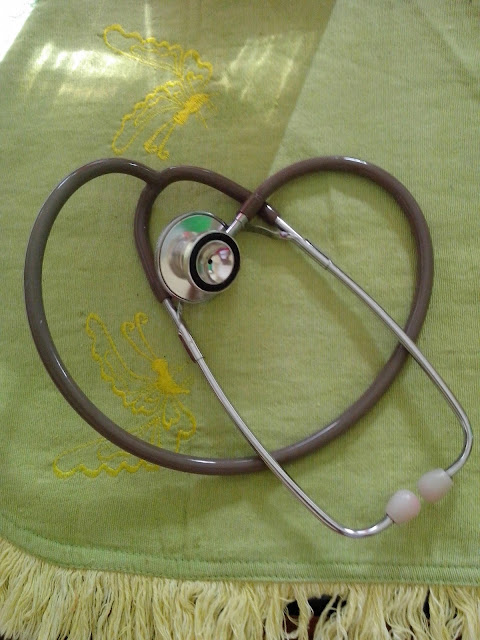A stethoscope is a medical device for listening to sounds inside the body. The initial stethoscope was invented in the early 19th century by French physician Ren� Laennec, but was actually trying to achieve a rather different end: doctor-patient distance....
Saturday, March 8, 2014
Nursing Diagnoses for Planning Care
Nurses and healthcare consumers agree that nursing care is a key factor in achieving positive outcomes and enhancing client satisfaction. Nursing care is instrumental in all phases of acute care as well as in the maintenance of general wellbeing (prevention of illness, rehabilitation, and maximization of health), or where a return to health is not possible, the relief of pain and discomfort and a peaceful death. To this end, the nursing profession has identified a problem-solving process that “combines the most desirable elements of the art of nursing with the most relevant elements of systems theory, using the scientific method”.
The original concept of nursing process was a three-step process of assessment, planning, and evaluation based on the scientific method of observing, measuring, gathering data, and analyzing the findings. After years of study, use, and refinement, the three-step process was expanded. The five steps—(1) assessment, (2) problem identification, (3) planning, (4) implementation (putting the plan into action), and (5) evaluation (assessing the effectiveness of the plan and changing the plan as indicated by current needs)—are central to nursing actions and the delivery of high-quality, individualized client care in any setting.
In 1991, the ANA Standards of Clinical Nursing Practice described the client care process and standards for professional performance, providing impetus and support for the use of nursing diagnosis in the practice setting. The work of NANDA International (formerly North American Nursing Diagnosis Association) has been ongoing for more than 25 years, beginning with efforts to identify client problems/needs for which nurses are accountable. NANDA continues to develop nursing diagnostic labels, which are now being complemented by the Iowa Intervention Project: Nursing Interventions Classification (NIC) and the Iowa Outcomes Project: Nursing Outcomes Classification (NOC). NIC directs our focus to the content and process of nursing care by identifying and standardizing the care activities nurses perform while NOC describes client outcomes that are responsive to nursing intervention and developing corresponding measurement scales.
Changes in the healthcare system continue to occur, requiring the profession of nursing to define itself in a way that will complement and facilitate the provision of appropriate, cost-effective evidenced-based care to all persons. Nurses need a common framework of communication and documentation so their contribution to healthcare is recognized as being essential and they are remunerated appropriately. At the very least, nursing requires a commonality of words describing practice so it can be captured and is visible in the healthcare databases.
The linkage of nursing diagnoses to specific nursing interventions and client outcomes has led to the development of a number of standardized nursing languages (Omaha System, Clinical Care Classification, Ozbolt Patient Care Data Set, Perioperative Minimum Data Set). The purpose of these languages is to help ensure continuity of appropriate highquality nursing care for the client regardless of setting. This is accomplished in part through enhanced communication, standardization of the process evaluating the care provided, and facilitation of documentation.
Subscribe to:
Posts (Atom)
Powered by Blogger.





